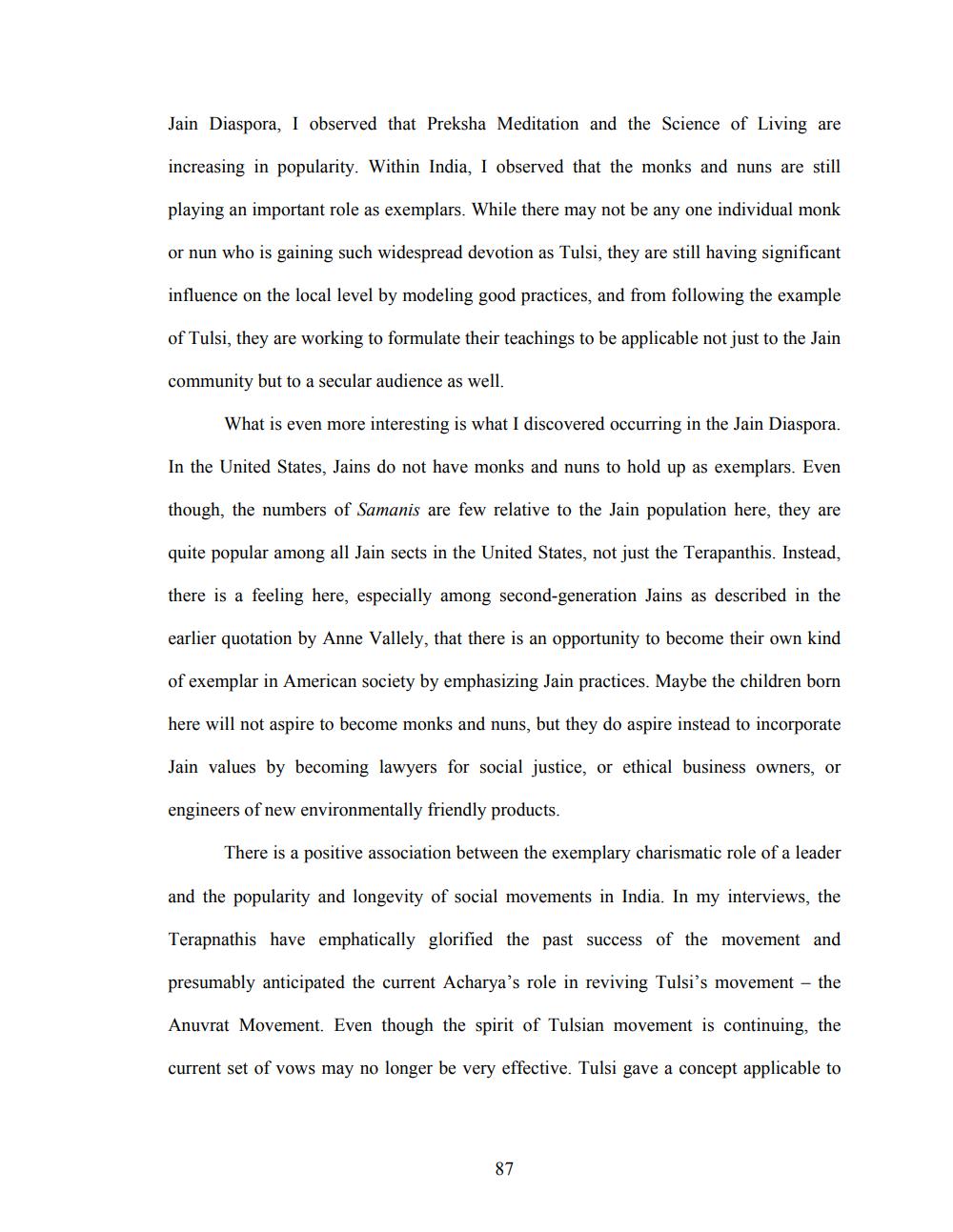________________
Jain Diaspora, I observed that Preksha Meditation and the Science of Living are
increasing in popularity. Within India, I observed that the monks and nuns are still
playing an important role as exemplars. While there may not be any one individual monk
or nun who is gaining such widespread devotion as Tulsi, they are still having significant
influence on the local level by modeling good practices, and from following the example
of Tulsi, they are working to formulate their teachings to be applicable not just to the Jain
community but to a secular audience as well.
What is even more interesting is what I discovered occurring in the Jain Diaspora.
In the United States, Jains do not have monks and nuns to hold up as exemplars. Even
though, the numbers of Samanis are few relative to the Jain population here, they are
quite popular among all Jain sects in the United States, not just the Terapanthis. Instead,
there is a feeling here, especially among second-generation Jains as described in the
earlier quotation by Anne Vallely, that there is an opportunity to become their own kind
of exemplar in American society by emphasizing Jain practices. Maybe the children born
here will not aspire to become monks and nuns, but they do aspire instead to incorporate
Jain values by becoming lawyers for social justice, or ethical business owners, or
engineers of new environmentally friendly products.
There is a positive association between the exemplary charismatic role of a leader
and the popularity and longevity of social movements in India. In my interviews, the
Terapnathis have emphatically glorified the past success of the movement and
presumably anticipated the current Acharya's role in reviving Tulsi's movement - the
Anuvrat Movement. Even though the spirit of Tulsian movement is continuing, the
current set of vows may no longer be very effective. Tulsi gave a concept applicable to
87




